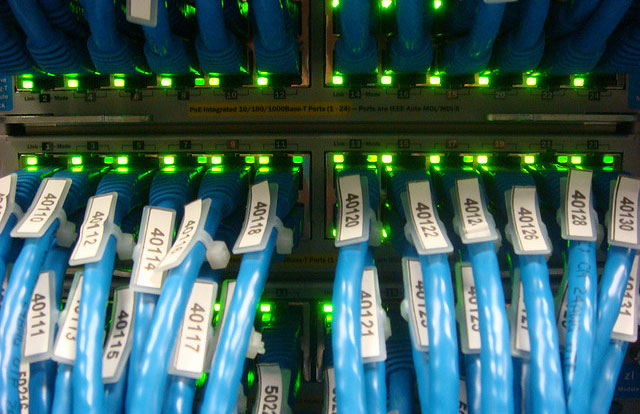 Among the many changes we have experienced during our 20 years as a democracy, one of the most fundamental has been the relatively sudden and widespread release of information.
Among the many changes we have experienced during our 20 years as a democracy, one of the most fundamental has been the relatively sudden and widespread release of information.
Back in 1994, at the dawn of South Africa’s new democracy, information and knowledge was easy to protect, hide or forget. Much of it was stored in locked filing cabinets, dusty archives, other people’s heads or far-away libraries.
Since then, we have seen a radical change. Today, one could ask virtually any question and get a reasonable answer from a mobile device. The world’s knowledge is suddently and dramatically freely available to everyone.
Not everyone I hear you say. Yes, that is true; this unfettered information access and data freedom has only been conferred on those fortunate enough to have smartphones and good data plans. The pace at which these are rolling out, however, means that before too long, this will mean nearly all of us. The trend is already well established — just as mobile phones have now become ubiquitous, so, too, will smart mobile phones and broadband Internet access.
There’s no doubt that secrets and inaccessible or classified information will still exist for many years to come. But these are becoming increasingly difficult for information protectors to keep under wraps. Proof of this, if you need it, can be found with Wikileaks and the whistle-blower Edward Snowden.
Data is now out there and increasingly accessible to those who look for it. The age of data freedom is finally arriving in most parts of the developing world and for everyone — rather than a global elite. In Africa, Asia, and South America, Internet penetration rates are skyrocketing and the major impediments to growth — lack of access and lack of information — are falling away.
Big data and data curation
Behind and in support of this building wave of data freedom is an even larger wave: the unprecedented collection of data.
As key aspects of our lives migrate unavoidably into the digital world, we create the data that will build the next generation of information for us all to use and have access to. There are few limitations to how far this can go as we build on this huge repository of information, layer after layer. Who our friends are, what we like, what we read and watch, where we go, how we spend, how far we run and even what we think about are all captured and stored for future analysis.
This is the “big Data” that dominates forums, symposiums, blogs, news reports and sales pitches — datasets that are too large and complex to manipulate or interrogate with standard methods or tools.
The inevitable next step is to develop means to curate this complex information and turn it in to meaningful intelligence that people can use. Marketers are currently hard at work finding ways to organise, interrogate and interpret these riches as they become available — looking for patterns in behaviour, understanding the underlying needs behind those patterns, analysing sentiment, exploring drivers of choice and predicting responses.
Our typical reaction is to think of this collection and organising of data as a sinister and invasive process. Done secretly, without our permission and for reasons that are not in our own interests, perhaps it is.
Resistance to the collection of this data is growing — particularly as the data that is collected seems to be tightly controlled and proprietary and available only to those who “own” it or pay for it.
We will remain sensitive to what data is collected about us, but ultimately we are now in a world of data freedom. That means that all this new information and all these new tools cannot remain hidden for long. As we become tuned in to the value of this information, our focus will move from fighting against the collection of data to demanding ways to access and use it. Soon, our paradigm with respect to data collection will switch from “collected about me” to “collected for me”.
The curation tools and skills that have been developed for marketers will evolve into tools for consumers and the general public in response to the demand. Wikipedia, Facebook and Twitter are already excellent hints at what these may look like. Each one is in its own way a highly effective tool for understanding the knowledge, likes, habits or opinions of others. As the data supporting these types of tools becomes exponentially deeper and richer (think, for example, of the new data being collected on location, moods and sentiments, financial behaviour, shopping habits, media usage and health), these tools will evolve and new ones will emerge, each one supported by smarter curation rules and algorithms and putting more access and power in the hands of all its users.
Data democracy
What happens when we all have the information, when we all have ready access to what was previously avaialble only to experts and specialists? If we imagine this information as reams of tables and spreadsheets and slideshow presentations, then we also imagine that very little will happen.

If, however, we imagine rich and interactive environments that allow us all to have deep and unmediated access and insight in to what others are thinking, doing and feeling, then the picture become a lot more exciting. Google, Wikipedia, Facebook and Twitter will one day look like crude early examples of the potential to share ideas and information. They will evolve or be replaced as powerful tools that put us all deeply in touch with our collective habits, needs and drivers start to find shape and form.
This democratisation of data, and ability of society to understand and respond to itself is going to reach deeply in to all aspects of our economies, our lives and our communities. It will bring with it a wave of change that will ultimately leave us stronger, with more insightful societies and deeper connections.
We are only beginning to understand how our world will shift as we enter this data democracy, and data truly becomes, as Abraham Lincoln might have put it, “of the people, by the people and for the people”.
- Justin Schwellnus is managing partner of Dashboard Marketing Intelligence

